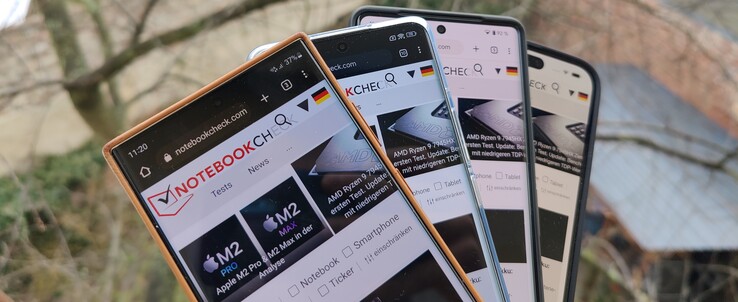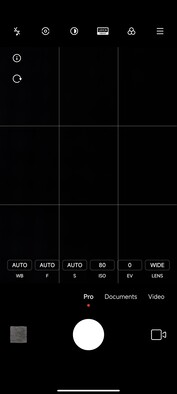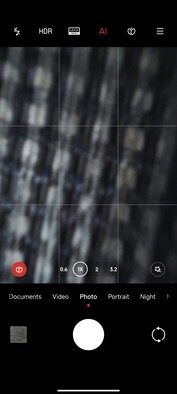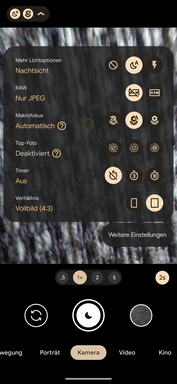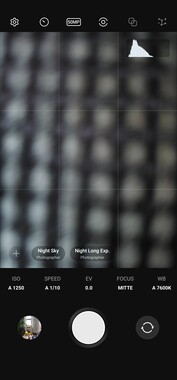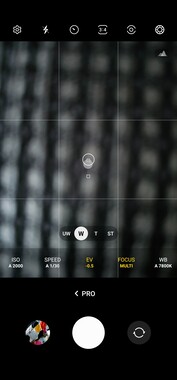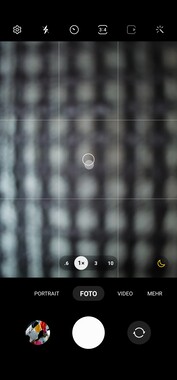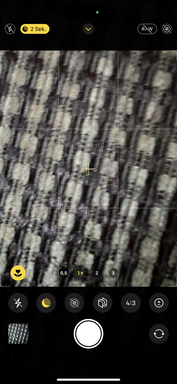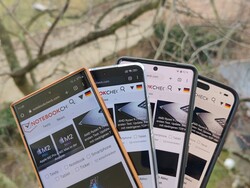The best camera phones of 2023 reviewed - If the sleeping giant awakes, then...
One of the most important criteria when purchasing a modern high-end smartphone is undoubtedly the built-in camera. High-resolution camera lenses have long become standard in Android phones - and now in Apple devices, too. So this begs the question: Who has implemented the best software algorithms?
The highly complex pixel binning method, which mathematically enlarges the size of a pixel and lets in more light and image data, is used by every single one of the phones in our test. The most extreme case of this can be seen in the Samsung Galaxy S23 Ultra, which uses its 200-megapixel sensor ISOCELL HP2 to fuse up to 16 individual pixels into one big superpixel. The Google Pixel 7 Pro, Xiaomi 13 Pro and Apple iPhone 14 Pro Max are much more conservative in the matter. Compared to the Samsung flagship, these devices use much bigger native pixels - the Korean manufacturer uses very small 0.6-micrometre imaging units - but then only 4 pixels are combined into one optimized superpixel (4-in-1 binning).
We have summarized the individual camera modules' specifications in the following table:
| Samsung Galaxy S23 Ultra | Google Pixel 7 Pro | Xiaomi 13 Pro | Apple iPhone 14 Pro Max | |
|---|---|---|---|---|
| Camera setup: Back | 200 MPix (f/1.7, OIS) | 50 MPix (f/1.85, 1/1.31", OIS) | 50 MPix (f/1.9, 23mm, 1“, OIS) | 48 MPix (f/1.78, 1/1.28", IOS) |
| Telephoto lens(es) | 10 MPix (f/2.4, 69 mm, OIS, 3x optical) + 10 MPix (f/4.9, 11°, 230 mm, OIS, 10x optical) | 48 MPix ( f/3.5, 1/2", OIS, 5x optical) | 50 MPix (f/2.0, 75mm, OIS, 3,2x optical) | 12 MPix (f/1.78, 3x optical) |
| Ultra wide angle | 12 MPix (f/2.2, 13 mm, 120°) | 12 MPix (f/2.2, 115°) | 50 MPix (f/2.2, 14mm, 115°) | 12 MPix (f/2.8, 120°) |
| Camera setup: Front | 12 MPix (f/2.2, 25 mm) | 10.8 MPix (f/2.2) | 32 MPix (f/2.0) | 12 MPix (f/1.9) |
| Software version | S918BXXU1AWBD | TQ1A.221205.011 | 14.0.12 | 16.3 |
With all the cameras in this test, we have made sure to use them to their full "intelligence" - i.e. with HDR and AI algorithms activated - to squeeze the most optimized result out of each phone automatically. The photos don't represent the resolution of each camera, instead, they are processed to 12 MP (Apple iPhone 14 Pro Max), 12,5 MP (Google Pixel 7 Pro, Xiaomi 13 Pro, Samsung Galaxy S23 Ultra) or 50 MP photos (Samsung Galaxy S23 Ultra). In the Xiaomi phone's camera software, the Leica mode "vibrant" was selected. To better differentiate between the various phones' picture details, we have saved the image file for each corresponding photo. To see this, click "full resolution".
Please note: This camera comparison solely focuses on photography. A further test to compare the video quality of the phones is coming soon.
The flagship smartphones' main camera
Quickly the different approaches taken by the various manufacturers became quite noticeable in our test. Google and especially Apple over-sharpened their photos considerably, whereas the Leica software on the Xiaomi softened photos slightly. Interestingly enough, the Xiaomi 13 Pro managed to show a lot more detail in its photos despite its soft focus, which you can see in the green feather on the plant image - although this sometimes ended up looking a little artificial. The Chinese manufacturer's Leica phone did very well on the window photo, however, some areas were slightly overexposed. The iPhone 14 Pro Max did almost as well in our test photos - especially when it came to HDR optimization, the Apple software did a really good job. The Pixel 7 Pro did quite a bit worse than the two previously mentioned phones. The Google phone's pictures were somewhat lacking in detail and sharpness. However, it did a great job of calibrating colors in its photos. Compared to our reference photos, the Galaxy S23 Ultra performed disappointingly badly. Using the 12.5-MP-binning mode, there was a clear lack of sharpness in its photos.
However, the Korean manufacturer still has another trick up its sleeve - the new 50-MP mode, which, like its competitors, only combines 4 pixels together. To keep a certain level of fairness, we also included this mode in our test - which left varying impressions. In this mode, the Galaxy S23 Ultra showed much better image content and depth of field compared to its competitors, however, we found it to be missing some software optimizations. Especially the HDR effects worked much better using the 12.5-MP mode and the lighting was anything but perfect using the 50-MP mode.
In darker conditions, Galaxy S23 Ultra users should probably refrain from taking a 50-MP photo. Here, the standard 16-in-1 binning showed clear advantages. Even though there was little light, we were missing no detail in the photos compared to the Xiaomi 13 Pro and iPhone 14 Pro Max and the dynamics in the photos were also very interesting. The Pixel 7 Pro also performed very well in our street photos, but we found the white balance to be far too cool. The Apple phone also struggled to capture the ambience of the street scene with the yellow street lights - the same goes for the plant image, which the iPhone 14 Pro showed as red instead of orange.
In bad lighting conditions, the Apple smartphone's test photo definitely captured the best vibe - at the same time, we could see quite a few exposure issues in the lighter parts of the photo. Even so, you could still identify the structure of the cobblestones well. The Xiaomi 13 Pro's house photo lacked sharpness and color accuracy. The Galaxy S23 Ultra and Pixel 7 Pro performed well considering the dark conditions.
The flagship phones' ultra-wide-angle lenses
Looking at the wide-angle photos, the Galaxy S23 Ultra surprised with its much lower sharpness levels compared to its competitors - this is definitely something that Samsung need to improve on, although the Galaxy S13 Ultra did already show some improvement in comparison to the Galaxy S22 Ultra. We found that the Xiaomi 13 Pro and the iPhone 14 Pro Max did much better than the current Samsung flagship. The Pixel 7 Pro also showed nice sharpness for an ultra-wide-angle camera, however, the colors were not always entirely accurate. In darker conditions, the Samsung Galaxy S23 Ultra edged towards the camera elite, but the colors in the street photo weren't quite right. Our favorite contender here was the Xiaomi 13 Pro - it managed to accurately capture light and shade conditions. Compared to its competitors' lightened photos, the Xiaomi phone relied on heavy contrast, which looked great. However, the iPhone 14 Pro also performed well in this area - even though some lens flare was visible near the street lights.
Image Comparison
Choose a scene and navigate within the first image. One click changes the position on touchscreens. One click on the zoomed-in image opens the original in a new window. The first image shows the scaled photograph of the test device.
HouseStreetWindowLow light - streetLow light - plantAside from wide-angle photos, our test phones' ultra-wide-angle cameras can also be used to take macro shots - or at least almost all of them can. Xiaomi approach this in a slightly different way with the help of a telelens which uses their in-house liquid lens design - incorporating a group of swimming lenses. The lens is split into two groups that can be moved internally to create a focus range between 10 cm and a theoretically infinite distance. This works well enough in everyday use, but the objects have to be positioned considerably further away from the camera compared to the other phones. In our test, this left some of the objects in our photos slightly blurry, as the manufacturer doesn't state what distance is optimal for this function.
If we had to pick a winner for this category, it would definitely be the Galaxy S23 Ultra, which stood out thanks to its good levels of sharpness and detail.
The flagship phones' zoom shots
To test the telelenses, we picked a subject which was close by and a subject which was far away - both in daylight. The Xiaomi 13 Pro was the only phone to yield positive results for the former. Here, the Xiaomi phone's liquid lens design gave it a clear advantage. This phone, along with the iPhone 14 Pro Max, managed to keep great sharpness levels at 3x and 5x zoom in the photo showing the house. The same goes for color accuracy. The Pixel 7 Pro also did relatively well, even if the photos were slightly softer in focus and the colors were slightly too cool. The Samsung Galaxy S23 Ultra showed some issues with its focus, but it managed to impress with its 10x zoom, where the photos were sharp and detailed. The Pixel 7 Pro was able to keep up with Samsung when it came to higher zoom levels, but the Xiaomi 13 Pro clearly did the worst.
When it came to image stabilization, Google and Samsung came out on top. Compared to the iPhone 14 Pro and the Xiaomi 13 Pro, the Pixel 7 Pro and the Galaxy S23 Ultra also showed great levels of stabilization.
The flagship phones' front cameras
In our eyes, the best selfie phone comes from Copertino. The iPhone 14 Pro Max, with its front camera with autofocus, showed a lovely level of sharpness and kept a lot of facial structure. However, the new 12-MP front camera of the Galaxy S23 Ultra, also with autofocus, didn't trail far behind the Apple phone - thanks to its great low-light capabilities. Photos taken on the Pixel 7 Pro showed a lot of contrast - but things like beard and hair textures were more smoothed out compared to the iPhone 14 Pro Max. The Xiaomi 13 Pro had the worst front camera in comparison. Here, it struggled with lighting, which was sometimes not very accurate when taking portrait photos and we could see quite a few image errors, too.
Image Comparison
Choose a scene and navigate within the first image. One click changes the position on touchscreens. One click on the zoomed-in image opens the original in a new window. The first image shows the scaled photograph of the test device.
Photo modePortrait modePhoto modeThe flagship phones' software
In all things camera software, Samsung definitely steals the show. If you place a lot of importance on settings options, you will be happy with the Galaxy S23 Ultra. Aside from a pro mode for photography, the Samsung flagship also offers a dedicated camera assistant, as well as a pro mode for taking photos in RAW mode. In fact, every phone in our test is able to take photos in RAW mode.
The Xiaomi 13 Pro features an extra pro mode, which lets you configure many different settings to fit your individual needs. In comparison, the Google Pixel 7 Pro and the iPhone 14 Pro Max offer far less freedom when it comes to their camera software. But even so, you can still customize a few different settings in their camera apps.
Verdict - flagship phone camera test
If you take lots of photos with your smartphone, you are sure to have a great time with any of our test subjects. Maybe you should wait for one or two camera updates before purchasing the Samsung Galaxy S23 Ultra - because, as it stands, it can't quite keep up with the rest of the phones. However, the Samsung phone proves to be quite the sleeping giant with its new 50-MP mode and it certainly shows great potential. One thing would be sure to reshuffle the pack: if a software update is released in future which improves HDR function and lighting to be as good as they are when using "normal" pixel binning. The sweet spot, which Youtube influencers claim the 50-MP mode to be, has certainly not quite been reached yet. At least in lower lighting conditions, the 12.5-MP mode is still currently the better choice.
In the future, it will be very interesting to see which camera concept will deliver the best results in the long run.
We were really impressed by the Leica cameras on the Xiaomi 13 Pro, surprisingly also at lower levels of zoom - which is supposed to be a defining feature of the actual flagship phone in this series. Especially the Sony IMX989's 1-inch main camera is sure to impress with its photos - aside from a few issues with image sharpness. However, the Xiaomi phone definitely isn't the best on the market when it comes to selfie cameras, although this phone still delivers decent image quality.
The Apple iPhone 14 Pro Max is a great allrounder. Its main camera - especially when taking into account its color accuracy - may not be the best, but apart from that it shows very few weaknesses. Especially its selfie camera outperforms the rest of the phones we tested.
The cheapest phone in this selection in a way also offers the best price-to-camera-quality ratio. The Pixel 7 Pro's ultra-wide-angle camera has a lovely level of sharpness, a great zoom of up to 5x and a good main camera. In times of 200-MP and 1-inch cameras, the latter should really be updated in the new Pixel generation. However, since Google don't operate in the high-end range of the smartphone industry, you can definitely forgive one or two deficits.
Haven't found the right smartphone for you? But you are still on the lookout for a good phone camera? Then you should take a look at our best smartphone camera list - here you can find a regularly updated list of the 10 best camera phones from our reviews.
Prices and availability
The Pixel 7 Pro can be purchased directly from the Google Store for $899, as well as from other major retailers like Amazon.
the Samsung Galaxy S23 Ultra starts at $1199.99 For the version with the smallest storage and can be purchased from Samsung or on Amazon.
The Xiaomi 13 Pro is currently not available to buy in the US.
The iPhone 14 Pro Max in all its color and storage variants can be bought directly from Apple for $1099 or on Amazon.


 Deutsch
Deutsch English
English Español
Español Français
Français Italiano
Italiano Nederlands
Nederlands Polski
Polski Português
Português Русский
Русский Türkçe
Türkçe Svenska
Svenska Chinese
Chinese Magyar
Magyar